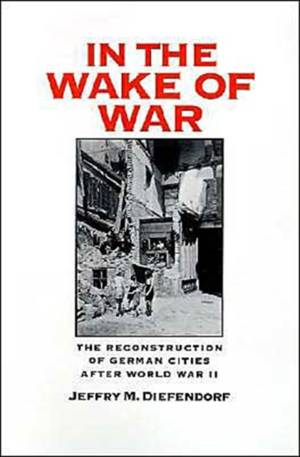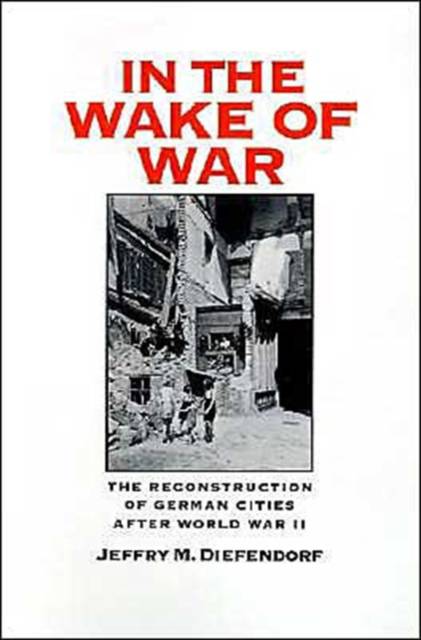
- Afhalen na 1 uur in een winkel met voorraad
- Gratis thuislevering in België vanaf € 30
- Ruim aanbod met 7 miljoen producten
- Afhalen na 1 uur in een winkel met voorraad
- Gratis thuislevering in België vanaf € 30
- Ruim aanbod met 7 miljoen producten
Zoeken
In the Wake of War
The Reconstruction of German Cities After World War II
Jeffry M Diefendorf
Hardcover | Engels
€ 424,45
+ 848 punten
Omschrijving
In 1945 Germany's cities lay in ruins, destroyed by Allied bombers `hat left major architectural monuments badly damaged and much of the housing stock reduced to rubble. At the war's end, observers thought that it would take forty years to rebuild, but by the late 1950s West Germany's cities had risen anew. The housing crisis had been overcome and virtually all important monuments reconstructed, and the cities had reclaimed their characteristic identities. Everywhere there was a mixture of old and new: historic churches and town halls stood alongside new housing and department stores; ancient street layouts were crossed or encircled by wide arteries; old city centers were balanced by garden suburbs laid out according to modern planning principles. In this book, Diefendorf examines the questions raised by this remarkable feat of urban reconstruction. He explains who was primarily responsible, what accounted for the speed of rebuilding, and how priorities were set and decisions acted upon. He argues that in such crucial areas as architectural style, urban planning, historic preservation, and housing policy, the Germans drew upon personnel, ideas, institutions, and practical experiences from the Nazi and pre-Nazi periods. Diefendorf shows how the rebuilding of West Germany's cities after 1945 can only be understood in terms of long-term continuities in urban development.
Specificaties
Betrokkenen
- Auteur(s):
- Uitgeverij:
Inhoud
- Aantal bladzijden:
- 424
- Taal:
- Engels
Eigenschappen
- Productcode (EAN):
- 9780195072198
- Verschijningsdatum:
- 24/06/1993
- Uitvoering:
- Hardcover
- Formaat:
- Genaaid
- Afmetingen:
- 162 mm x 236 mm
- Gewicht:
- 834 g

Alleen bij Standaard Boekhandel
+ 848 punten op je klantenkaart van Standaard Boekhandel
Beoordelingen
We publiceren alleen reviews die voldoen aan de voorwaarden voor reviews. Bekijk onze voorwaarden voor reviews.











